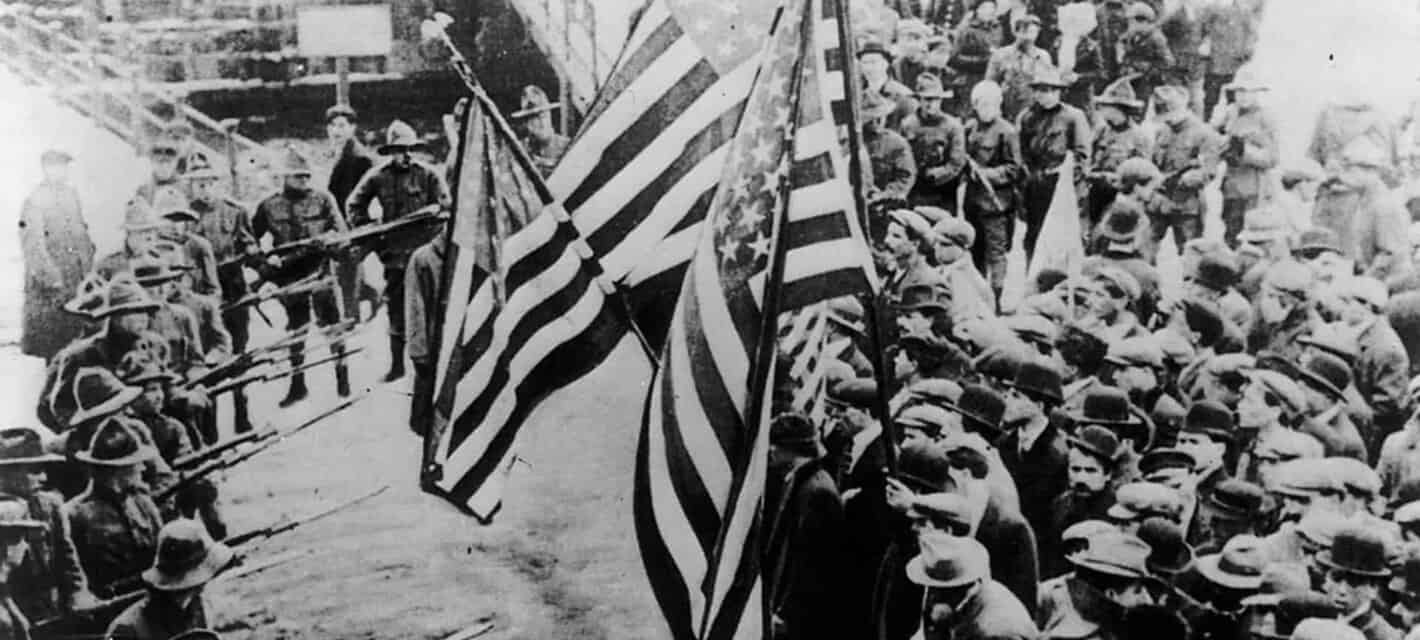Industrialization and capitalism took hold of America after the Civil War. As Eastern Europeans fled the collapse of the Ottoman Empire, they brought with them utopian ideas of a mutually beneficial relationship between workers and owners. Even in the aftermath of the horrific violence that emancipated thousands of slaves, southern laborers were hopeful for better industrial opportunities. The reality was different.
Industry required 14-hour days often six days a week. Working conditions were dangerous, and dismemberment and death were not uncommon. Laborers had little freedom, and in some instances they were paid in company script, which prevented them from ever saving money to move out of company-owned housing. Wages fluctuated with the financial markets. Federal regulations protecting the health and safety of workers and a federally mandated minimum wage were still decades away. Unions became the only way for workers to even attempt to improve their conditions. Below are just six labor protests that turned violent between 1877 and 1929.

The Great Railroad Strike 1877
Railroad development began in the 1830s. Coal-powered and later steam-powered locomotives hauled freight and people reliably and into regions where canals and waterways did not and could not exist. In 1860, there were 30,000 miles of track; by 1890 there were 167,000 miles of track. Expansion was greatest in the West and the South. Private railroad companies used federally backed loans, subsidies, and land grants to connect almost every corner of the nation. Railroad companies were extremely profitable enterprises. Workers for the railroads had few rights and little pay.
In 1873, a depression began, throwing many laborers out of work. For four years, major railroad companies had decreased workers’ wages to offset the impact of the economic downturn. When the railroad companies decided to reduce wages, there was no conversation and workers had no say to the reduction in their pay. To circumvent yet another wage reduction, workers began to organize themselves by joining the Knights of Labor, which was formed in 1869.
Violence is often accompanied by workers organized. Irish miners, for example, formed a secret labor society called the Molly Maguires. Members murdered selected coal company officials who presumably encouraged wage cutting to ensure company profitability. Wage cutting and the deskilling of jobs enraged workers in all industries, but the practice continued.
In July 1877, owners and managers of the Baltimore & Ohio Railroad, agreed to slash wages for the fifth time in four years. Workers struck to protest the wage cut. President Rutherford B. Hayes dispatched federal troops to protect the railroad’s property against the striking workers. The use of federal troops infuriated laborers in the East and especially in the Midwest. Railroad workers stopped working and went on strike.
In Pittsburgh, the state militia was called to end the strike. The militia fired on the striking workers and their families, killing 25 people. As news of the violence spread, so did the strike. Soon, workers as far away as Galveston, Texas, and San Francisco, California were striking in solidarity. The nation’s railroads were at a standstill. For two weeks, workers clashed with local law enforcement and federal troops. By the time the strike was squashed, more than 100 people had been killed.
The Great Uprising of 1877 failed to prevent further wage cuts for workers. Yet, the first nationwide work stoppage in American history can be viewed as a success for labor activism. For the first time, workers cooperated across ethnic and even racial lines to fight for a common goal: to end wage cutting. In the strike’s aftermath, workers joined the Knights of Labor, whose membership reached nearly one million workers by 1886.

